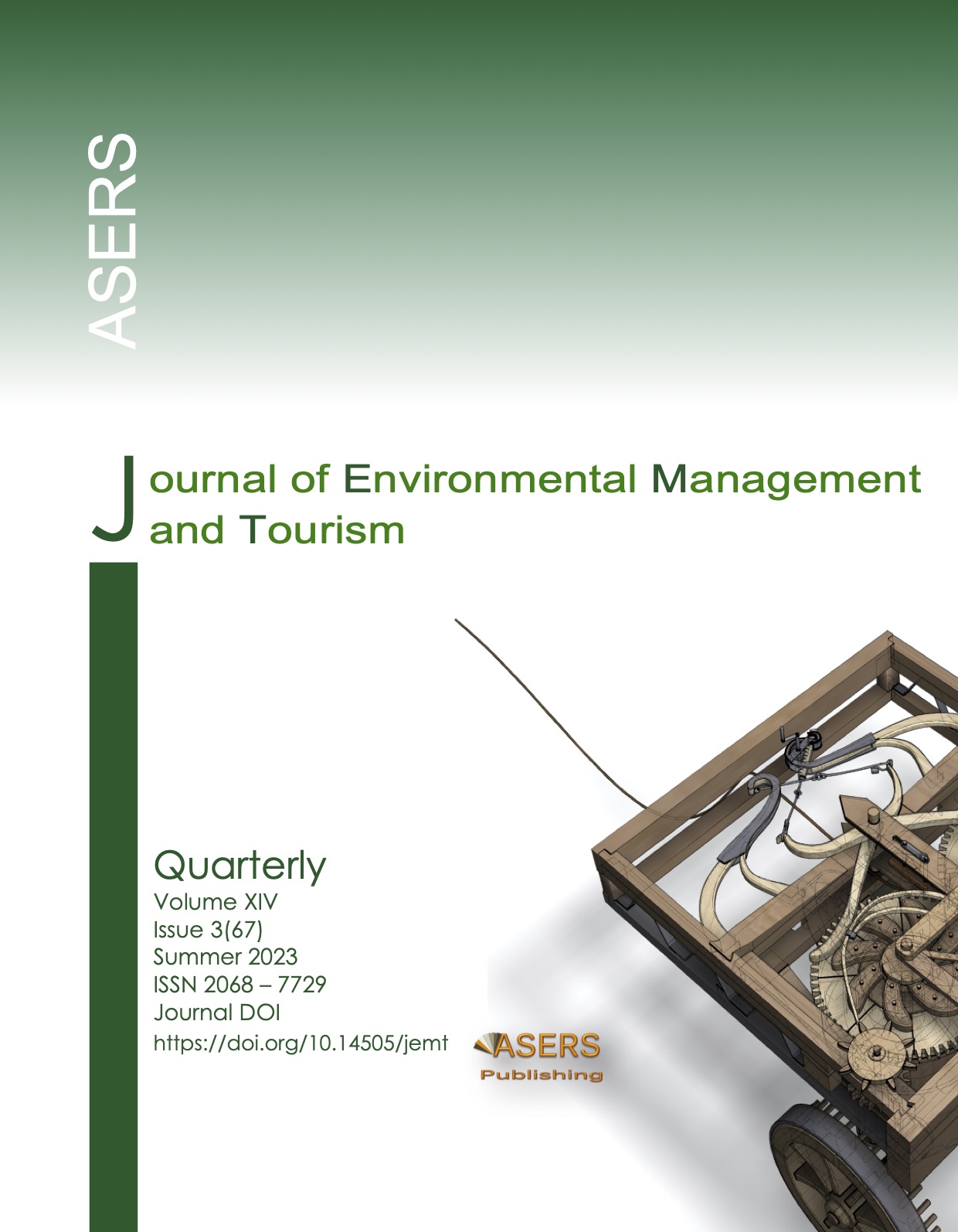Impact of Environmental Standards on Employment
Abstract
There is a wide variety of dynamics of structural transformations of employment in the world. Some regions of the world are seeing steady growth in employment, while others are facing severe declines in employment. Demographic changes potentially affect regional growth through a reduction in the labor force, which has an impact on growth and is largely dependent on the level of education, labor productivity, and labor resources. The article discusses the impact of ecology on the structural transformation of employment in the Republic of Kazakhstan. The labor market of the Republic of Kazakhstan has acquired a permanent character over the years of Independence and reflects the changes that the country's economy has experienced over the past 30 years. Structural shifts were observed in the structure of world GDP from industrial production to the service sector, to the developing economy of Kazakhstan. The purpose of the study is to analyze the impact of ecology on the structural transformation of employment in the context of digitalization of the economy of Kazakhstan.
References
[2] Bashir, M., Shahzad, L. 2020. A brief review of socio-economic and environmental impact of Covid-19. Air Qual Atmos Health, 13: 1403–1409, DOI: https://doi.org/10.1007/s11869-020-00894-8
[3] Bogdashkina, I. V., Kuspanova, A. E. 2019. The effectiveness of state programs in solving the problems of employment of the population. Actual problems of the present. Science and Society, 4(5): 8–14.
[4] Bogensberger, K. 2022. Is this a green or brown job? Taxonomy of sustainable employment. Ecological Economics, 200: 107469. DOI: https://doi.org/10.1016/j.ecolecon.2022.107469
[5] Bottazzi, P. 2019. Work and social-ecological transitions: A critical review of five contrasting approaches. Sustainability, 11(14): 3852. DOI: https://doi.org/10.3390/su11143852
[6] Brand-Correa, L. I., Mattioli, G., Lamb, W. F., and Steinberger, J. K. 2020. Understanding (and tackling) need satisfier escalation. Sustainability: Science. Practice Policy, 16(1): 309-325. DOI:https://doi.org/10.1080/15487733.2020.1816026
[7] Gough, I. 2020. Definition of floors and ceilings: contribution of the theory of human needs. Sustainability: Science, Practice Policy, 16(1): 208-219. DOI: https://doi.org/10.1080/15487733.2020.1814033
[8] Haberl, H., et al. 2020. A systematic review of the evidence on decoupling of GDP, resource use and GHG emissions, part II: Synthesizing the insights. Environmental Research Letters, 15(6). DOI:https://doi.org/10.1088/1748-9326/ab842a
[9] Janser, M. 2018. Greening workplaces: Empirical studies of the relationship between environmental sustainability and the labor market. Bulletin University of Bamberg, 7(1): 11-19.
[10] Keynes, D. M. 2023. General Theory of Employment, Interest and Money. Moscow: Yurayt Publishing House, 342 p.
[11] Kondratiev, N. D. 2018. Large Conjuncture Cycles. Reports and their discussion at the institute of economics. Moscow: Direct-Media, 241 p.
[12] Marx, K. 2019. Capital. Moscow: AST Publishing House, 480 p.
[13] Menshikova, M. A., and Abbas, A. B. 2018. Analysis of strategies for improving the quality of the labor force. Auditorium, 2(2): 89-95.
[14] Pigu, A. 1985. Economic Theory of Welfare. Moscow: Progress Publishing House, 968 p.
[15] Ricardo, D. 2023. Beginnings of Political Economy and Taxation. Moscow: AST Publishing House, 576 p.
[16] Rutkowska, M., and Sulich, A. 2020. Green jobs on the background of industry 4.0. Procedia Computer Science, 176: 1231–1240. DOI: https://doi.org/10.1016/j.procs.2020.09.132
[17] Sagidullin, F. 2022. Assessment of the impact of the green economy on employment. Scientific Research and Innovation in the Industry 4.0., 1(1): 185-191. DOI: https://doi.org/10.47689/4.v1i1.3543
[18] Vivarelli, M. 2012. Innovation, employment and skills in advanced and developing countries: A Survey of the Literature. Journal of Economic Issues, 48(1). DOI:10.2753/JEI0021-3624480106
[19] Vona, F., Marin, G., Consoli, D., and Popp, D. 2019. Green skills, No. 21116; National Bureau of Economic Research. Working Paper Series. DOI: http://www.ssrn.com/abstract=2639099
[20] Wolcott, E. 2021. Employment inequality: Why do the low-skilled workless now? Journal of Monetary Economics, 118 (3): 161–177. DOI:10.1016/j.jmoneco.2020.09.004
[21] Zemtsov, S. P. 2018. Robots and potential technological unemployment in the regions of Russia: Experience of studying and preliminary assessments. Issues of Economics, 7: 142-157. https://doi.org/10.32609/0042-8736-2017-7-142-157
[22] *** Cedefop Skills for Green Jobs: An Update European Centre for the Development of Vocational Training. 2019 Available at: https://www.cedefop.europa.eu/en/publications/3078
[23] *** Official resource of Data from the Bureau of National Statistics of the Agency for Strategic Planning and Reforms of the Republic of Kazakhstan for 2020-2022. Available at: http://www.stat.gov.kz
[24] *** Official resource of Labor market of Kazakhstan in the 3rd quarter of 2022. Available at: https://www.gov.kz/
[25] *** Official resource of World Economic Outlook Database, I.M.F. 2020. Available at: https://www.imf.org
Copyright© 2025 The Author(s). Published by ASERS Publishing 2025. This is an open access article distributed under the terms of CC-BY 4.0 license.
